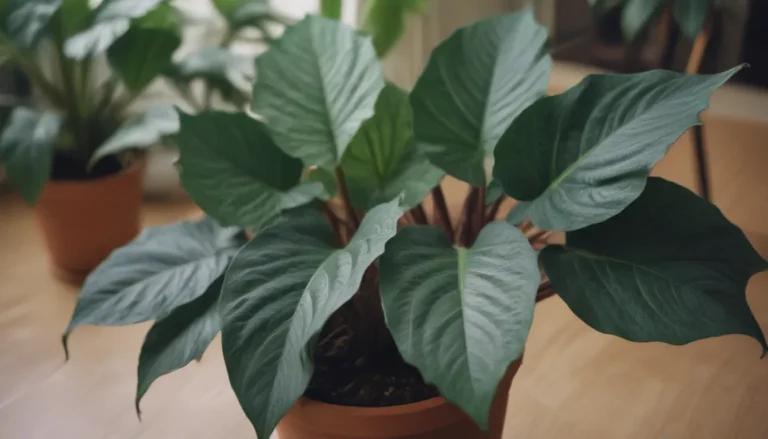A Comprehensive Guide on How to Choose Healthy Plants at the Nursery

Having a beautiful and flourishing garden is a dream for many. Whether you are a seasoned gardener or a beginner, starting with healthy plants is essential for achieving a successful garden. Healthy plants establish themselves faster, require less maintenance, and overall, are more likely to thrive in your garden. In this guide, we will walk you through all the essential steps to ensure you choose the healthiest plants when visiting a nursery.
Importance of Choosing Healthy Plants
Plants that are stressed or diseased can struggle to establish themselves in a new environment. By carefully selecting healthy plants, you are setting yourself up for success in your gardening endeavors. Here are a few reasons why choosing healthy plants is crucial:
- Healthy plants establish themselves faster in your garden.
- They require less maintenance and attention.
- They are more likely to bloom or produce fruits sooner.
- Stressed plants may not recover or thrive in your garden environment.
How to Spot a Healthy Plant at the Garden Center
1. Quality of the Nursery or Garden Center
Before you start picking out plants, take a moment to assess the overall quality of the nursery or garden center. Look for the following indicators:
- Are the majority of the plants well cared for and healthy?
- Avoid nurseries where a large number of plants appear wilted or unhealthy.
2. Foliage
Carefully examine the foliage of the plants you are considering for purchase. Healthy plants will have the following characteristics:
- Green, shiny, and lush leaves.
- Avoid plants with wilting or yellowing leaves, as they may be stressed.
- This is especially important when buying annuals or vegetables that may not have time to recover.
3. Shape
Consider the overall shape of the plant before making a purchase. Look for plants that are:
- Compact and full, with multiple stems.
- Taller plants may indicate they have been straining for light and may not branch properly.
- Avoid thin and spindly plants that may flop in the garden.
4. Insects and Disease
Inspect both the plant and the container for any signs of insects or disease. Check for the following:
- Blackened areas, holes, spots, mushy areas, stickiness, webbing, or distortions.
- Check both sides of the leaves and the potting soil.
5. Root System
Do not overlook the health of the roots when selecting a plant. Consider the following:
- Pot-bound plants with roots growing out of the bottom may be stressed or stunted.
- Plants with few roots that lift out easily may need more time to establish in your garden.
6. Rootball
When buying balled-and-burlapped trees or shrubs, pay attention to the root ball. It should feel solid and intact:
- A broken root ball indicates roots may have dried out.
- Ensure the root ball is healthy to prevent stress on the plant.
7. Stem Damage
Inspect the stem of the plant for any cracks or scars. Damaged stems can weaken the plant and make it more susceptible to disease or pests.
8. Weeds
Check for weeds in the pot as they compete with the plant for nutrients and may indicate neglect by the nursery staff:
- Avoid purchasing plants with weeds in the pot to prevent introducing new weeds to your garden.
9. Buds and Flowers
While a plant in full bloom may be visually appealing, consider opting for plants in bud stage for better transplanting:
- Plants in bud stage are more likely to thrive in a new environment.
- Existing flowers may fade quickly, so purchasing a plant with buds ensures a longer bloom time at home.
By following these steps, you can ensure you are selecting the healthiest plants for your garden. If you come across a plant you simply can’t resist, remember that with some extra care and attention, it may still thrive in your garden.
Bonus Tips for Choosing Healthy Plants
In addition to the above guidelines, here are some bonus tips to help you choose the healthiest plants at the nursery:
- Consider the local climate and soil conditions when selecting plants for your garden.
- Choose plants that are suited to your garden’s sun exposure and water requirements.
- Look for plants that are free from any visible signs of stress, such as wilting or yellowing leaves.
- Take your time to carefully inspect each plant before making a purchase.
- Ask nursery staff for advice on selecting the best plants for your garden.
Remember, selecting healthy plants is the first step towards creating a thriving garden. By investing time and effort in choosing the right plants, you are setting yourself up for a successful gardening experience.
Conclusion
Choosing healthy plants at the nursery is essential for creating a vibrant and flourishing garden. By following the guidelines and tips outlined in this guide, you can confidently select the healthiest plants for your garden. Remember to prioritize plant health, assess each plant carefully, and consider the unique needs of your garden environment. With a little extra care and attention, you can enjoy a beautiful and productive garden filled with healthy plants. Happy gardening!





